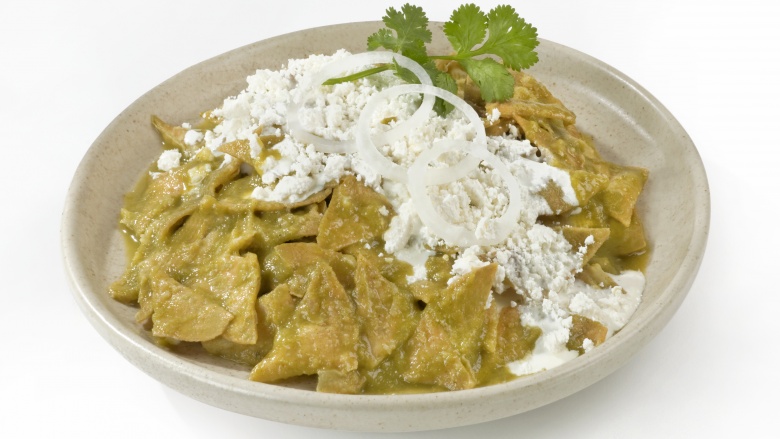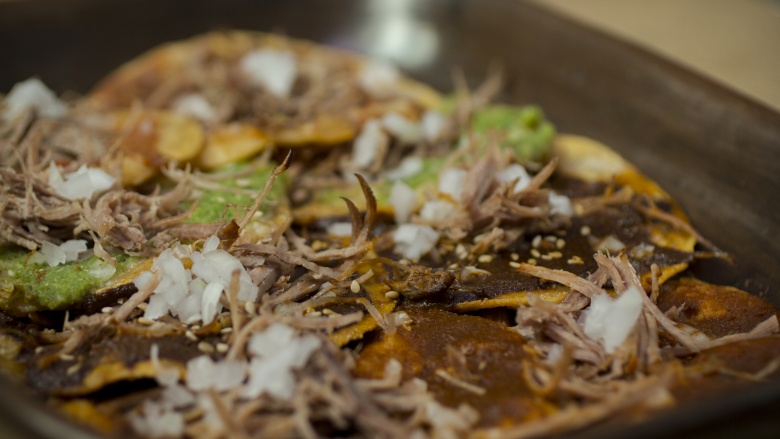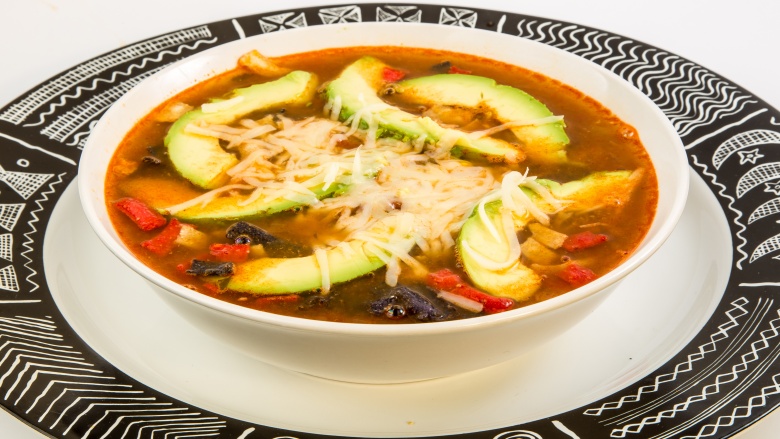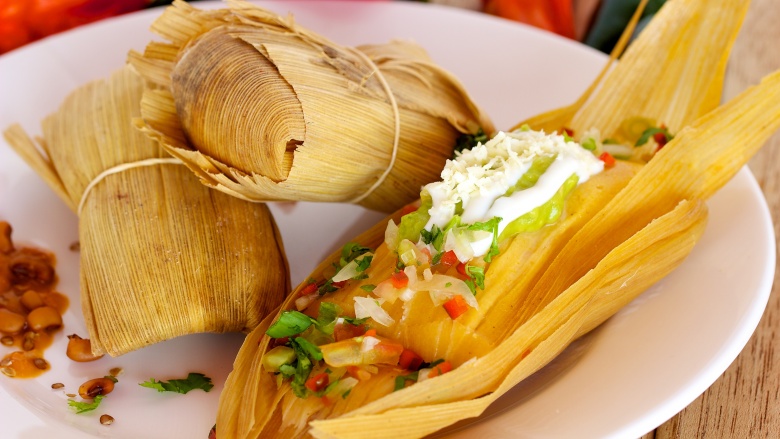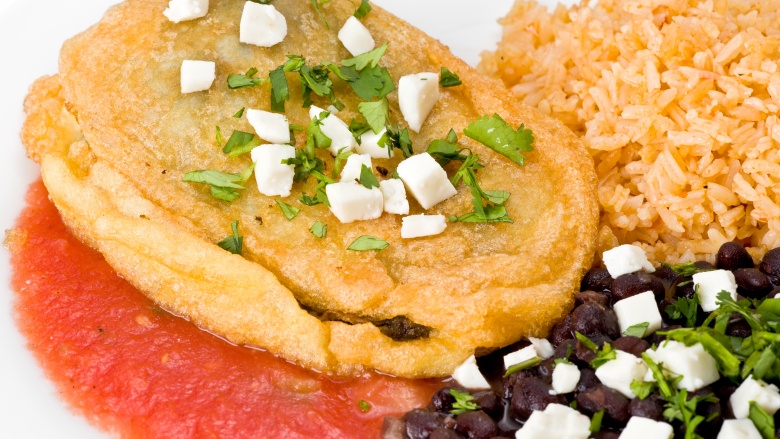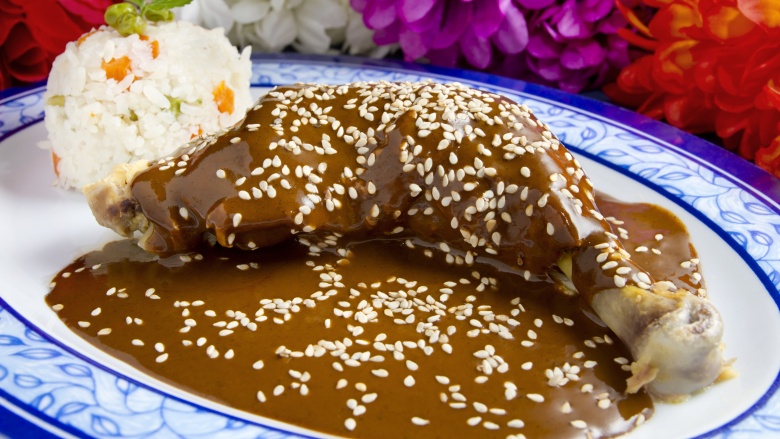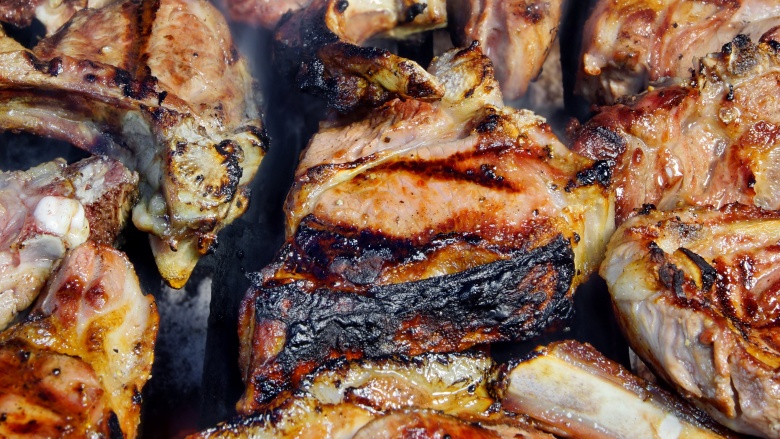Delicious Things You Are Missing Out On At Mexican Restaurants
Do you love Mexican food, but find yourself ordering the same old tired tacos or chimichangas (which was probably invented in America, by the way) every time you visit your favorite burrito joint? Perhaps you've been hesitant to try that super-authentic place down the street, worried that you won't recognize anything offered on the menu. Never fear — the following primer on the best dishes to try at Mexican restaurants will take all the anxiety out of your next Mexican food fiesta.
Chilaquiles
Chilaquiles likely evolved from a need to use up leftover tortillas. The tortillas, once stale, are sauteed in a pan with red or green sauce, and perhaps topped with melted cheese or sour cream. While chilaquile's simplest preparations are actually popular for breakfast in Mexico, variations with meats and vegetables appear on many lunch and dinner menus. If you like nachos, chances are you will enjoy chilaquiles — though the texture is different, they have a similar flavor profile.
Chalupas
A popular street food in central Mexico, chalupas are named for the canoes navigated by the ancient Aztecs through the waterways of what is now Mexico City. Corn tortillas are fried in manteca (lard) for just a few moments. The result is a still pliable, not-quite-crispy-as-a-taco base that is topped with favorites like fresh salsa, stewed meats, and cheese, and then served open-faced. Chalupas are a safe bet for taco lovers looking to up their foodie game.
Sopa/caldo
Soups are well loved in Mexico, and a popular one is caldo de pollo (chicken soup). Popular soups you'll see on an authentic Mexican menu will likely include sopa de tortilla (tortilla soup), sopa de habas (fava bean soup), and sopa de frijol (black bean soup), to name a few. A good, truly Mexican restaurant will take their soup very seriously, so ordering a bowl before your meal is definitely recommended.
El tamal (tamales)
In ancient Aztec times, tamales varied in size and wrapping, depending on what was available. Banana leaves, tree bark, and sometimes even scraps of fabric were used to wrap the tamales before they were steamed in underground pits. Modern-day tamales, on the other hand, are created by making a dough of masa (hominy flour) and wrapping it in a corn husk along with fillings like meat, cheese, and vegetables. The tamales are then steamed in large pots on the stove. A time-intensive process, tamale making is often reserved for holiday celebrations, with groups of family and friends spending the entire day making them at a social event known as a "tamalada."
Chile relleno
One of Mexico's most popular and traditional dishes, the chile relleno originally hails from the colonial city of Puebla. The city's namesake poblano pepper is charred and peeled, and either stuffed simply with cheese, or with a variety of fillings. The pepper is then dipped in an egg batter, and fried to perfection. Traditionally topped with red salsa, eclectic variations can be seen on many a menu, depending on regions and tastes. Chile rellenos are an ideal dish for those looking for an authentic Mexican dish with a little heat.
Mole
Mole (that's MOH-lay) literally means "sauce," but it means so much more than just sauce to the people of Mexico, with recipes differing widely from region to region, and even family to family. If you spy mole on a Mexican restaurant menu, chances are that it will be one of the darker varieties, like mole poblano or mole negro. The thick, savory sauce is painstakingly slow-cooked over hours or even days, and may contain a mixture of chilis, nut pastes, garlic, dried fruits, spices, and chocolate. Try mole served over chicken or turkey. Mole poblano de guajalote (mole poblano with turkey) is considered by many to be the national dish of Mexico.
Barbacoa
Barbacoa, which means "barbecue," can refer to any slow-roasted, barbecued meat (at popular chain restaurant Chipotle, the barbacoa served is made from beef). Traditional barbacoa, however, usually refers to sheep or goat, which is cooked over an open fire, or in a fire pit covered with leaves. This deliciously charred meat is then topped with a variety of salsas or mole. If you see barbacoa on a menu, be sure to inquire as to which meat is used ... or take a chance on a delicious surprise.

